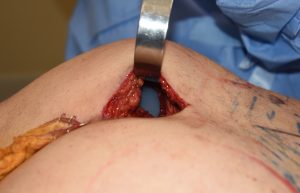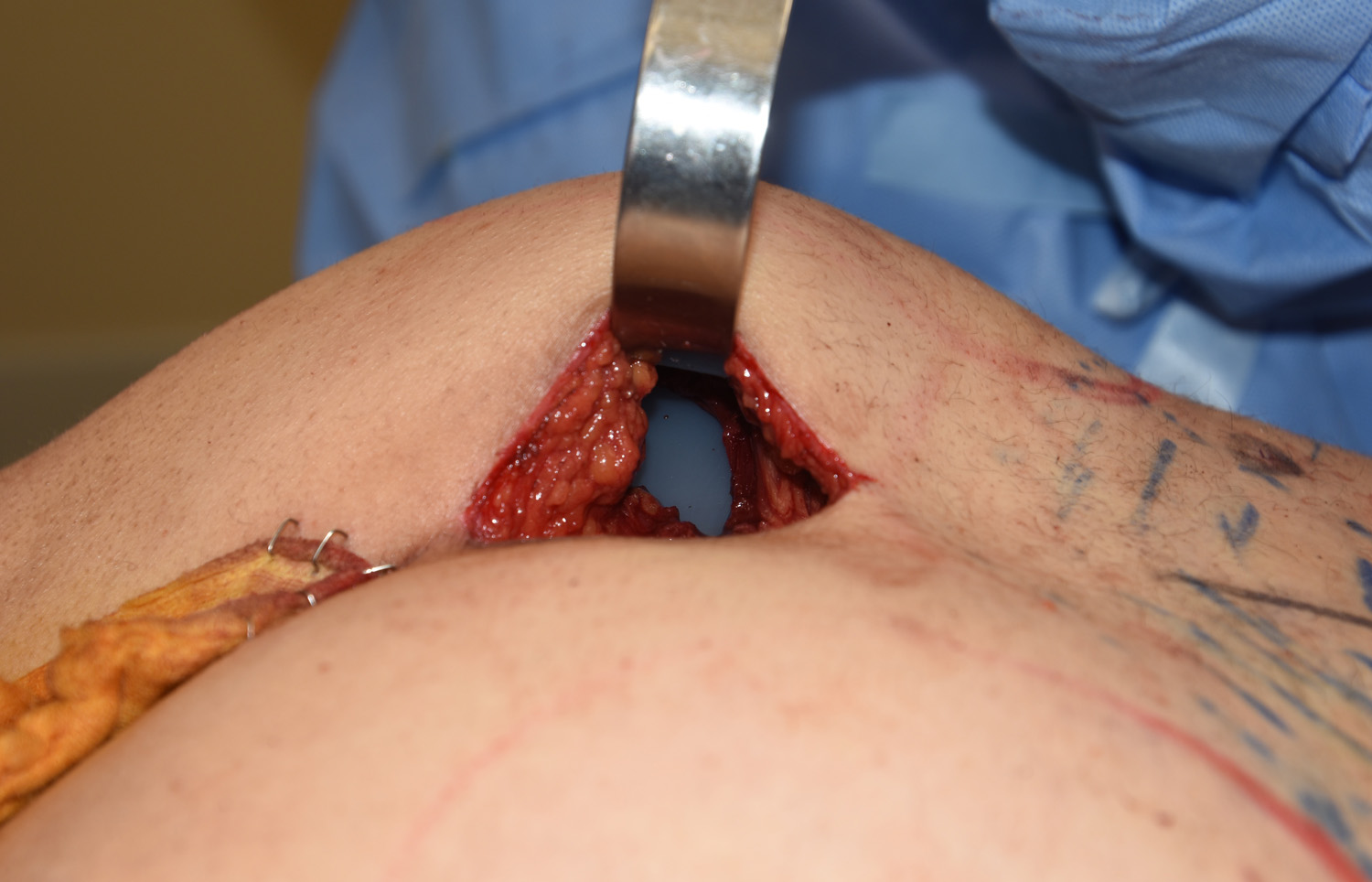The major change in buttock implants over the past two decades is improvements in the implant’s durometer and better soft tissue coverage of the implants. Buttock implants used to be made of a more stiffer silicone durometer which gave them a hard and unnatural feel. That has been improved by softer more gel-like durometers which have both a better feel and also enables them to be more easily placed through a midline intergluteal or paired paraintergluteal incisions.

In the January 2023 issue of the journal Plastic and Reconstructive Surgery an article was published on this topic entitled ‘The Dual Plane Gluteal Augmentation: An Anatomical Demonstration of a New Pocket Design’. In this well illustrated paper the authors proposed a dual plane approach where the upper half of the implant pocket is under the gluteus medius muscle while the lower half is intramuscular in the gluteus maximus muscle…hence the dual plane designation. They reviewed their experience with a blunt direction technique for these pocket creations in 82 buttock implant patients over a 1 1/2 year period. Implant sizes ranged from 270cc to 360ccs. Technically they performed composite buttock augmentation since every case had fat injection grafting to the buttocks as well. But this doesn’t change the main focus of he paper…the dual superior submuscular gluteus medius and the inferior gluteus maximus intramuscular pocket.
Their patient complication rates were 7 wound dehiscences, delayed seromas in 5 patients and temporary sciatic nerve pain in 4 patients. No reopeations were necessary.
They evaluated this technique in ten cadavers to determine the anatomic layers of the dual pocket implant dissection which confirmed the dual muscular coverage of the implant.

By placing the implant under the gluteus medics muscle there is better coverage over the super-lateral people of the implant which is where in the completely intramuscular technique the mussel often atrophies and the implant edge can become visible.
Dr. Barry Eppley
World-Renowned Plastic Surgeon



